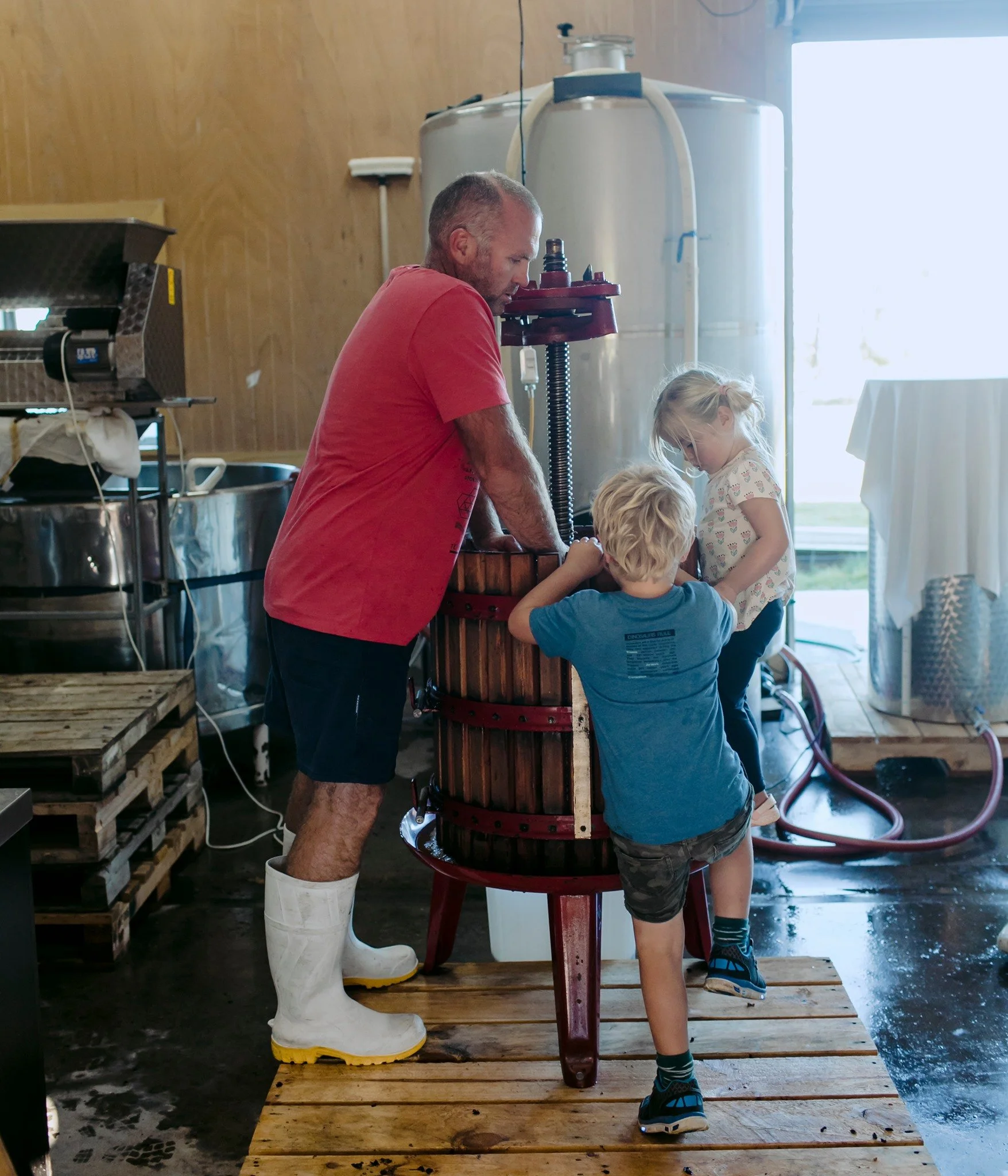Our story
As a teenager, Marc Hatfield began brewing beer and cider in his parents' garage and selling it to friends, sparking a lifelong passion for fermentation.
Marc worked in Central Otago and Hawkes Bay vineyards, earned a degree from Lincoln, and in 2001, he and his father bought land between Alexandra and Clyde to pursue grape growing and winemaking.
He believed Alexandra Basin was the best spot in Central Otago for producing high-quality, expressive pinot noir, thanks to its flat, cocooned and sheltered location between Old Man Range and Haehaeata. It was just a year after the Otago Central Rail Trail opened and bike tourism was on the increase.
Marc worked during the day planting vineyards and installing irrigation in Bendigo and Bannockburn and spent his evenings planting on the home block.
The land previously home to merino rams and rabbits was transformed by the orderly arrangement of newly planted rows and polished stainless-steel posts. Marc spent several years studying the site and selecting clones for flavour diversity. He eventually built a house and a small-batch winery on the property.
In 2011, the initial vintage was produced using the 'Dunstan Road' label. In time Sarah joined the fold and began selling wine at local farmers markets. Over the years visitors came to the tasting room, stopping by on the Otago Central Rail Trail.
The Hatfield family expanded, raising three young children and growing grapes, plants and vegetables in a sustainable environmentally friendly way, avoiding sprays, became increasingly important.
Our philosophy
Yields are kept low and the vineyard is managed with sustainable practices.
Existing on the edge of what is possible when growing grapes, Central Otago is a climate of extremes. Long hot summer days, the variance in diurnal temperatures, and dry autumns and very cold winters mean that the vines are tough.
This challenging climate means that the wine has a unique flavour profile, the small berries and very ripe fruit mean than all the work has been done in the vineyard and we can adopt a ‘minimal intervention’ approach in the winery.



